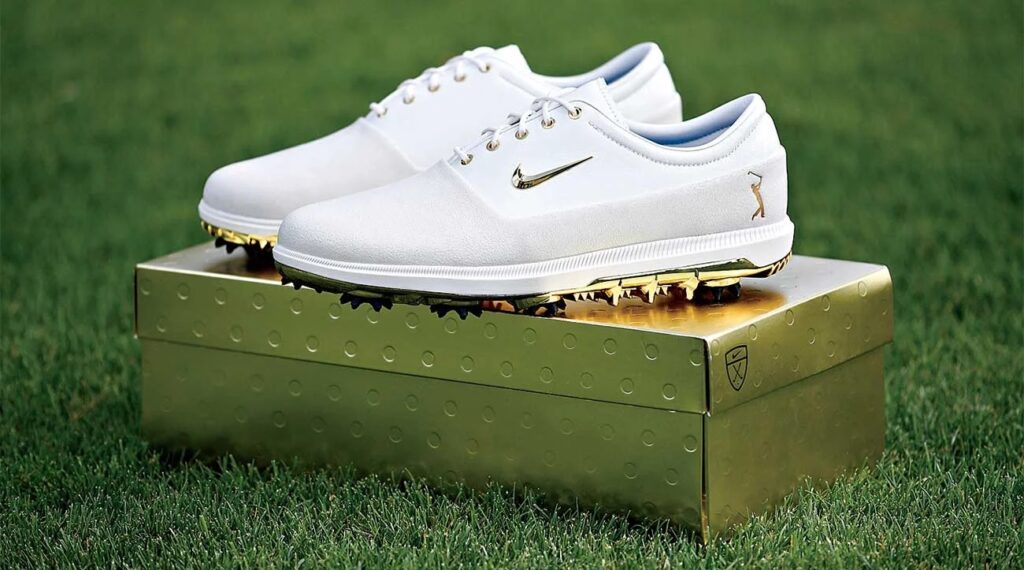What To Look For When Buying Golf Shoes

Regular old sneakers just aren’t going to cut it anymore.
You’ve played enough golf now where it’s time you invested in a pair of golf shoes.
In addition to merely looking the part out there, golf shoes will make you feel more comfortable and give you some much-needed traction if the weather is poor or the course is hilly.
Golf shoes are often more breathable too and give you better support- especially in your arch- during your swings.
If you have never bought golf shoes before, here are some things you should know during your search.
Try Them On!
Before getting into what to look for, make sure you try your golf shoes on before buying them.
Heck, try multiple different kinds on!
That way, you can compare and find the best pair for you.
It can be tempting just to go by reviews, assume they’re the right size and buy a pair online.
But you should really try them on first.
Here are some tips for trying on golf shoes:
- Wear the socks you typically do while playing
- Do some practice swings in them, ideally with a club
- Measure your feet beforehand if you can
The Fit And Comfort
Obviously, your golf shoes should fit and feel comfortable.
You’re going to spend two to five hours walking and standing around throughout a round of golf, and your shoes shouldn’t be the reason your day is miserable.
And with so much to think about while you swing -come down on the ball, follow through, keep your arm straight- you don’t want “it feels like I’m walking on Legos” to be one of them.
You’ll probably have an idea of what size feet you are, but just in case, try on a couple of different sizes, as not all brand sizes are exactly the same.
I can almost guarantee you have at least one pair of shoes that are a half size smaller than the rest, don’t you?
Support/Flexibility
Your golf shoes should give you support but also flexibility.
Everyone is different and will want different amounts of sturdiness and flexibility, so try multiple pairs on and find the right combination for you.
You should look for some flexibility in the toe and around your ankles, as they often move during your swing.
Arch and midfoot support is also important as you typically finish your swing on the balls of your feet.
Spike Or Spikeless
Some golf shoes have spikes on them to increase grip and traction on the course, so you don’t slip on wet and hilly courses. They can also help you make quick turns when you strike the ball.
You don’t get that extra traction with spikeless shoes. However, having no spikes doesn’t make a difference on dry surfaces, as spikeless still has sharp tongs on the sole.
Spikeless are typically cheaper too and won’t damage the grass on the course, especially the green.
So unless you’re playing in the rain often, you’re probably fins with spikeless golf shoes.
Diabetic Golf Shoes
If you have diabetic feet, you may want to get a pair of golf shoes with extra comfort.
Here is an article that lists some of the best diabetic golf shoes, with descriptions and reviews.
Style Of Golf Shoe
Golf shoes generally come in two styles: Traditional and athletic.
Traditional shoes have a classic look and are made out of leather, making them sturdy, long-lasting, comfortable and waterproof.
Athletic golf shoes look similar to sneakers and other athletic footwear. They are breathable, lightweight and flexible, and often have waterproof options.
And of course, each style comes with several different designs and color schemes so that you can look fantastic while hitting the links.
When it comes to golf shoes, though, function comes before fashion.
So remember to look for the right fit, comfort, support and flexibility! If they look great, that’s just a bonus.